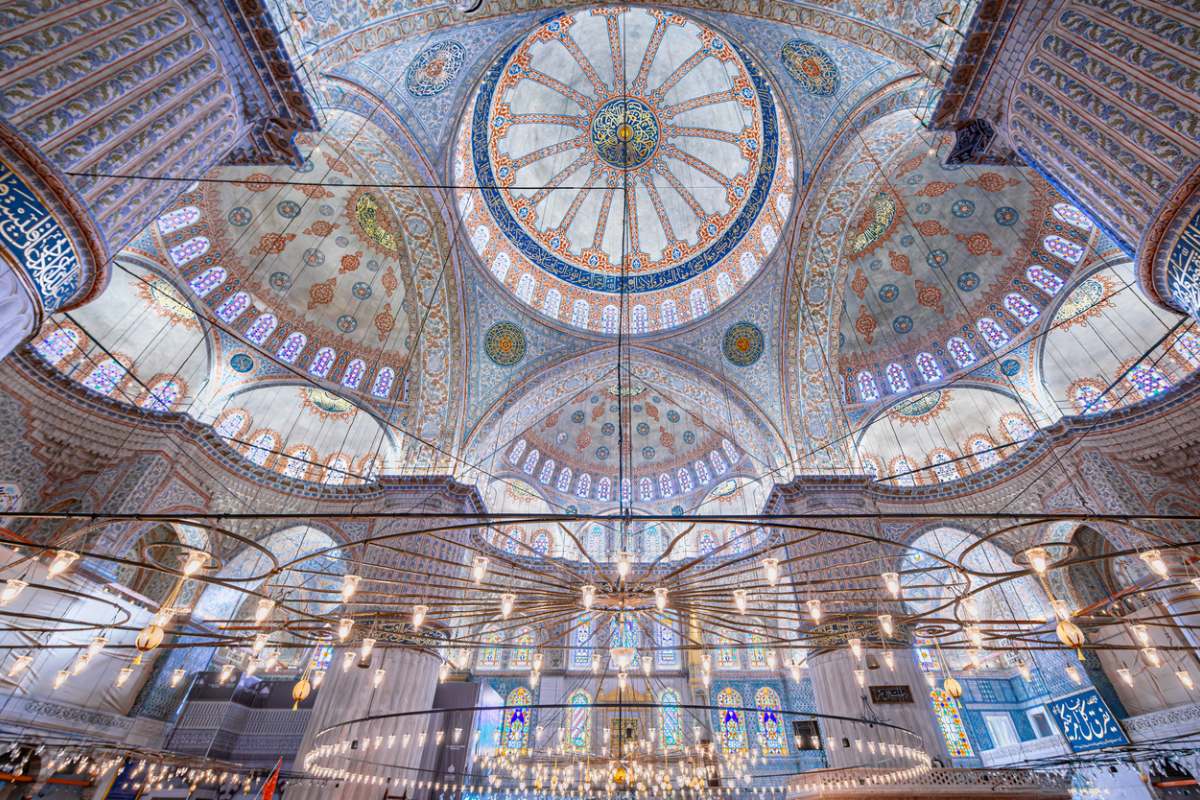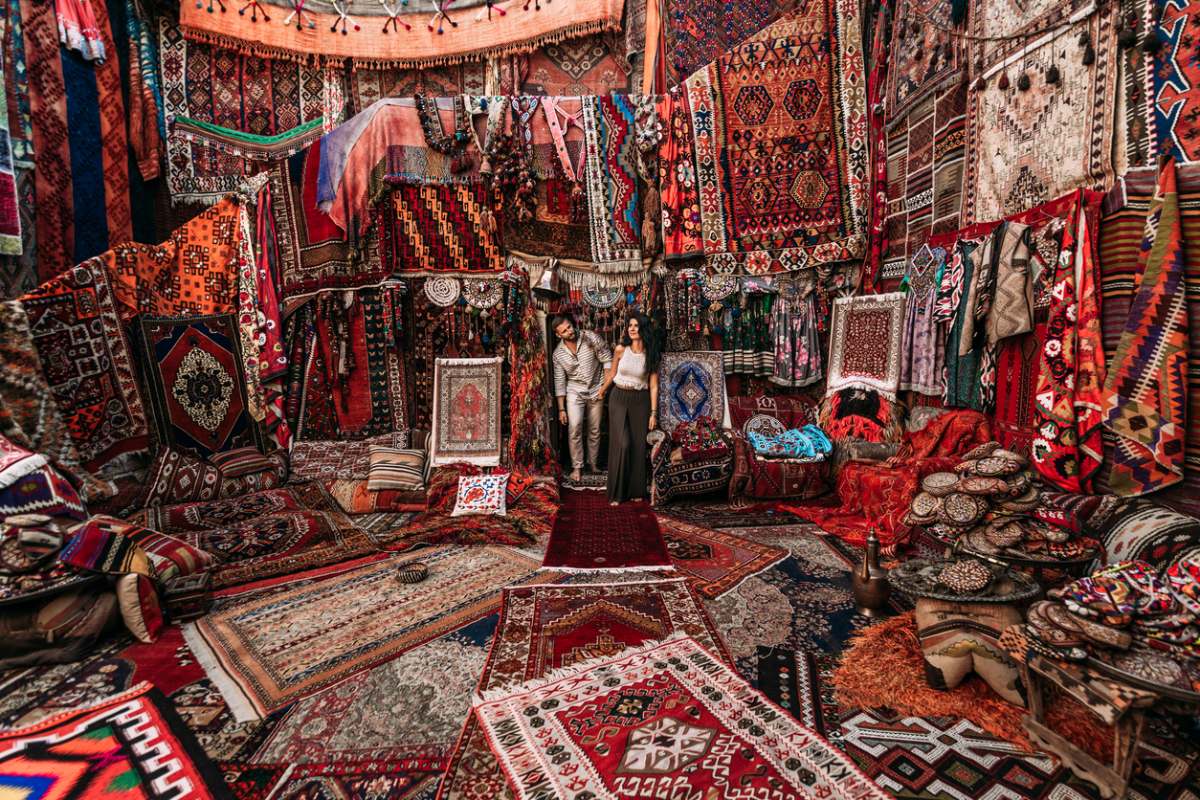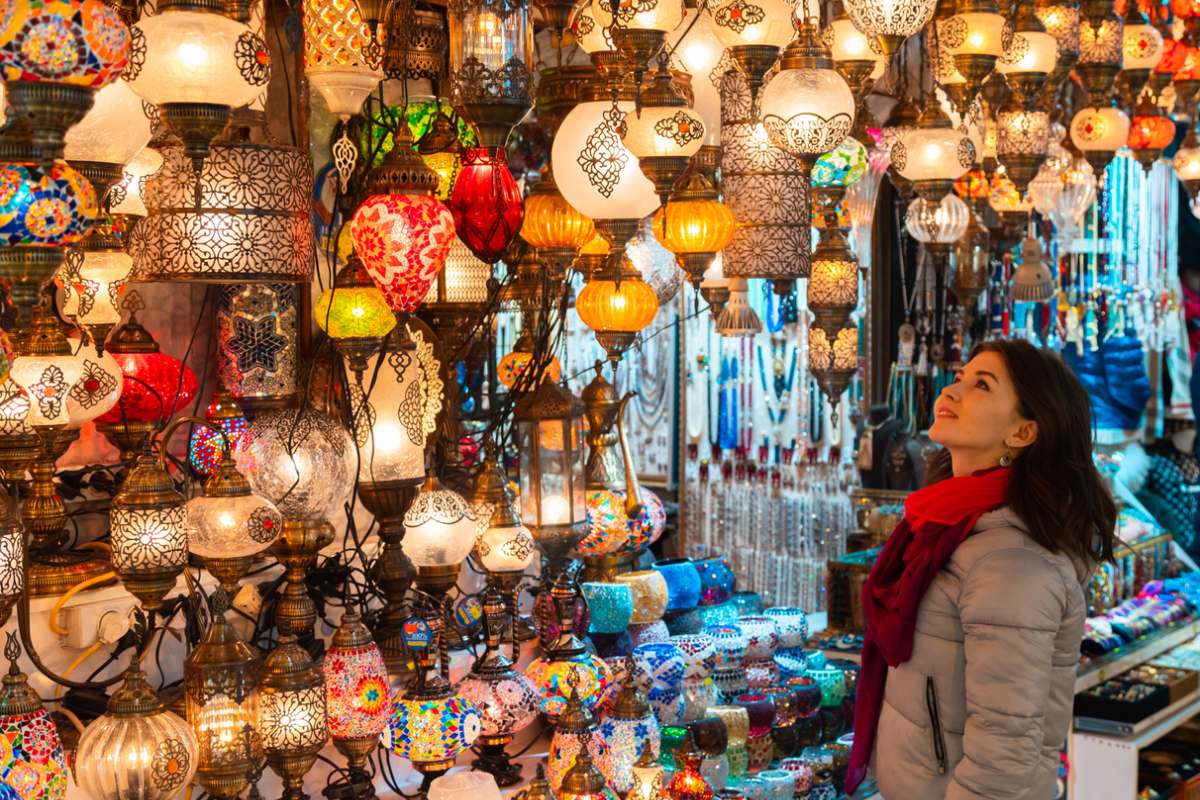Turkey, like other Muslim countries, is not noted for its fine arts, as Islam prohibits the representation of God and human beings.
However, the history of this country is so rich and varied that there are notable exceptions.
But what has had a great development in Turkey is the decorative artsalways so closely linked to architecture and to the everyday environment, which makes them craftsmanship of enormous value.
En estas líneas te contamos lo más relevante del arte y la artesanía de Turquía, con las que entrarás en contacto durante tu viaje.
As described in the page dedicated to Architecturethere are many periods and, therefore, styles in Turkey.
And each of them is associated with a decorative art, in accordance with their own religion and with the artistic precepts derived from it.
While in Greco-Roman Turkey the buildings were usually polychrome and embellished with sculptures, either reliefs or round bulks, with the division and fall of the Western Roman Empire, this changed.
Art lovers will be fascinated by Turkey’s spectacular Byzantine mosaics.
Many of them cover pavements, in the style of earlier Roman mosaics.
But what is truly unique about this type of art is their use on walls and, above all, in the interior of large domes, which are a key element of Byzantine and later Ottoman architecture.which are a key element of Byzantine and, later, Ottoman architecture.
These mosaics stand out for their high proportion of gold-colored tesserae. gold-colored tesseraeIn the early times of the empire, they were common for backgrounds of figurative scenes, but the various iconoclastic crises (prohibition of representing images of Jesus Christ and other sacred figures as a type of idolatry or heresy) led to the decline of this type of compositions, which was confirmed with the subsequent Ottoman conquest.
In fact, in places such as Hagia Sophia, figurative compositions were eventually covered to hide them from view.
For this reason, Byzantine mosaics, or those inspired by them, stand out for their golden color on neutral backgrounds or in simple compositions, although others of a figurative nature are also preserved.
Thus, it is possible to admire such outstanding examples as the following in Istanbul:

One of the Turkish arts that reaches the highest levels of mastery is tilework or ceramics: of great importance in Muslim culture, it was one of the most widely used decorative resources in the Ottoman Empire. was one of the most widely used decorative resources during the Ottoman Empire..
En Estambul, tras caer en manos otomanas, acabó sustituyendo a los mosaicos bizantinos, de modo que el interior de las principales mezquitas de esta ciudad construidas a partir de mediados del siglo XVI emplean azulejos de cerámica para cubrir todo el espacio interior.
In Istanbul and in many other cities, the vast majority of ceramic pieces had an indisputable origin: Iznik undisputed provenance: Iznikformerly called Nicaea.
According to some sources, there were several hundred production kilns in the city, which fed the high demand that came from many different parts of the empire.
This type of pottery has a white base and on it is arranged the drawing itself, where the colors blue and turquoise are usually blue and turquoise colors.
Su gran fama se debió no solo a la maestría de los diseños, sino también a la riqueza de los ingredientes: en su base se empleaba, entre otros minerales, el quartzwhich provided special reflections and luminosity.
And for pigments, lapis lazuli, emerald or coral.
One of the monuments where this art acquires its zenith is the interior of the Azu Mosquel, all of which are covered with Iznik ceramics.
But most of the mosques in Istanbul during the Ottoman period make use of this ceramic to a greater or lesser extent, as well as others from different regions, such as the Selim Mosque of Edirne.
Además, muchos objetos fabricados con este material, como jarras o jarrones, se exponen en diferentes museos turcos y del mundo, con mención especial a la Iznik Tiles Foundation, in Istanbul.

Another of the hallmarks of Turkish art are textiles, which are largely a Persian heritage brought by the nomadic Turkic peoples of Turkey. nomadic Turkic peoples Middle Ages, who came from the East, and understood the usefulness and beauty of these the usefulness and beauty of these pieces during their travels..
Los selyúcidas ya recurrían a diferentes tejidos para su día a día y con fines decorativos, y los otomanos lo siguieron promoviendo por todas las regiones de Anatolia.
In the 16th century they were not only highly appreciated in the Ottoman Empire, but also outside it.
The best example of this are the Usak carpets (central Anatolia), often called Holbein carpets because the German painter Hans Holbein the Younger used them recurrently in his paintings, often as an incomparable frame for portraits of aristocrats.
But this was not the only example: Italian and German artists such as Giovanni and Gentile Bellini, Hans Memling or Domenico Ghirlandaio have also given names to some patterns, as they usually appear in their works.
For their part, Lotto rugs respond to the same idea, but in this case to carpets made on the coast of the Aegean Sea.
An interesting aspect of this art is that it used to be executed by women who often used their own imagination to elaborate each fabric, employing embroidery and other resources.
In addition, they used natural dyeswith a durability This is a source of pride for the current Turkish authorities, who have promoted projects for the research and development of these techniques, which used fabrics as varied as wool, silk or cotton.
Other prestigious textile pieces were the Hereke Hereke carpetsThe most outstanding examples are those of the “Els Altos”, which used to be of large size and were designed to cover the floor of large halls.
The most outstanding examples are those of the Dolmabahçe Palace in the Bosphorus (19th century), of incomparable refinement and richness.
They were produced in the locality that gives them their name, some 60 km from Istanbul, and not only used wool and cotton, but also on occasion gold and silver threads.
Although the Seljuk Turks were fervent followers of Islam, in their architecture they did resort to decorative reliefs with figurative themes: to a lesser extent in religious constructions, but more usually in civil buildings.
And always, resorting to a most striking imageryfrom powerful animals (lions, eagles of prey) to fantastic creatures fantastic creatures (lions, eaglesas mermaids, dragons and sphinxes.
Examples are the double-headed eagles in the mosque and hospital of Divriği or the dragons of the Çifte Minareli madrasa of Erzurum.

All the Turkish arts we have referred to had a decorative function in architectural spaces.
But what is interesting is that they also have their translation into everyday life and to the most humble environments.
And they do so in the form of handicrafts, which are now available to travelers in the various bazaars.
Some of those worth mentioning, due to their quality, interest and availability for travelers are:
Therefore, entering the Turkish bazaars is an authentic cultural experience that not only connects with the current society of the country, but also with the ancestral arts and crafts that have been transferred from generation to generation until today.
The most famous bazaars in Turkey are perhaps those of Istanbul: the Arasta Bazaar and, above all, the Grand Bazaar.
Pero en todas las ciudades de Turquía encontrarás bazares equivalentes, a tamaño más reducido pero con piezas de artesanía del mismo valor, con mención especial a los de Antakya, Antalya, Bursa, Egirdir, Gaziantep, Izmir, Malatya, Mardin, Safranbolu and Sanliurfa..
The so-called plastic arts, mainly painting and sculpture painting and sculptureare minority disciplines in Turkey, associated with the ancient past, but also with the present and the immediate future, since the ban on figurative art has recently been relaxed and has been reduced to the religious sphere.
That is why in Turkey, modern art museums modern art museums since the 20th century, another example of the country’s integration into the international art circuit.
The de Istanbul is one of the most important, but we can also cite the Museum of Painting and Sculpture in Ankara or the Odunpazari in Eskisehir..
Entre los artistas turcos de mayor renombre se pueden citar Osman Hamdi BeyHaluk AkakçeKutlug Ataman, Serkan Özkaya and Leyla Gediz, among others.
And if we look back to the times of Ancient Greece and the Roman Empire, we can also find interesting examples of plastic arts, as the pagan religion of both civilizations allowed and even promoted it.
In this sense, to find magnificent Greek and Roman sculptures it is advisable to visit the archaeological sites open to the public and, above all, the various archaeological museums created to display the artifacts collected at these sites.
The most important ones are listed below.
The museum is a space closely linked to tourism and, for that reason, there are numerous museums scattered throughout Turkey, many of them recently opened to attract visitors and help in the research and conservation of heritage.
There are all kinds of them, and as a sample, we group the most important ones by theme below.
You can find more information on the pages of each destination.